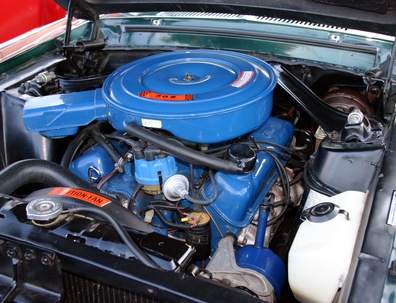
As much as 70 percent of your car's stored chemical energy never makes it to the wheels; most of the energy in your gasoline winds up as waste heat, which goes into your cooling system and leaves through the radiator. This thermal energy comes from either the heat produced by the combustion process itself or through the friction of mechanical components rubbing against each other. The 302 is no exception, and offers plenty of opportunity for improvement in a number of areas.
Coat all of your bearing surfaces with specialty Teflon powder. This not only helps drastically reduce friction inside your engine, it also improves engine longevity and oil life through better lubricity and lower friction.
Install the lightest possible crankshaft and rods. In the end, all of your engine's moving internal parts are a necessary evil. They power that their mass requires to accelerate is wasted energy, which you can reduce by using lighter components. Use a lightweight crankshaft that has had the counterweight's edges beveled to reduce oil build-up. Install a "windage tray" under the crankshaft to keep oil where it belongs.
Install flat-top, 10 to 1, hypereutectic (high silicone content) pistons and extremely low-tension piston rings. The pistons will help to keep weight down, and the low-tension rings will pay huge dividends in fuel economy later. If your 302 sees a lot of highway miles then you might want to consider installing slightly more efficient but heavier dished pistons. Dished pistons don't do as well in stop-and-go traffic, but excel on the highway.
Install a set of high swirl cylinder heads. Ford's efficient GT40 and GT40P heads (found on early-90s Mustangs and late-90s Explorers, respectively) are an excellent choice for affordability, performance and fuel economy. Coat the piston tops, combustion chamber roofs, intake and exhaust ports with insulating ceramic powdercoat. This will keep thermal energy where it belongs, making power instead of heating water.
Install a low-lift "truck" or RV" camshaft, long-runner intake manifold (coated on the bottom with ceramic insulator), a rest of long-tube race-style headers (coated inside and out with ceramic), a 1987 to 1994 Mustang fuel injection system, underdrive pulleys, an electric water pump and electric cooling fan.
Install a race-style crankcase vacuum pump; you'll need this to keep combustion gases from blowing past your low-tension piston rings.